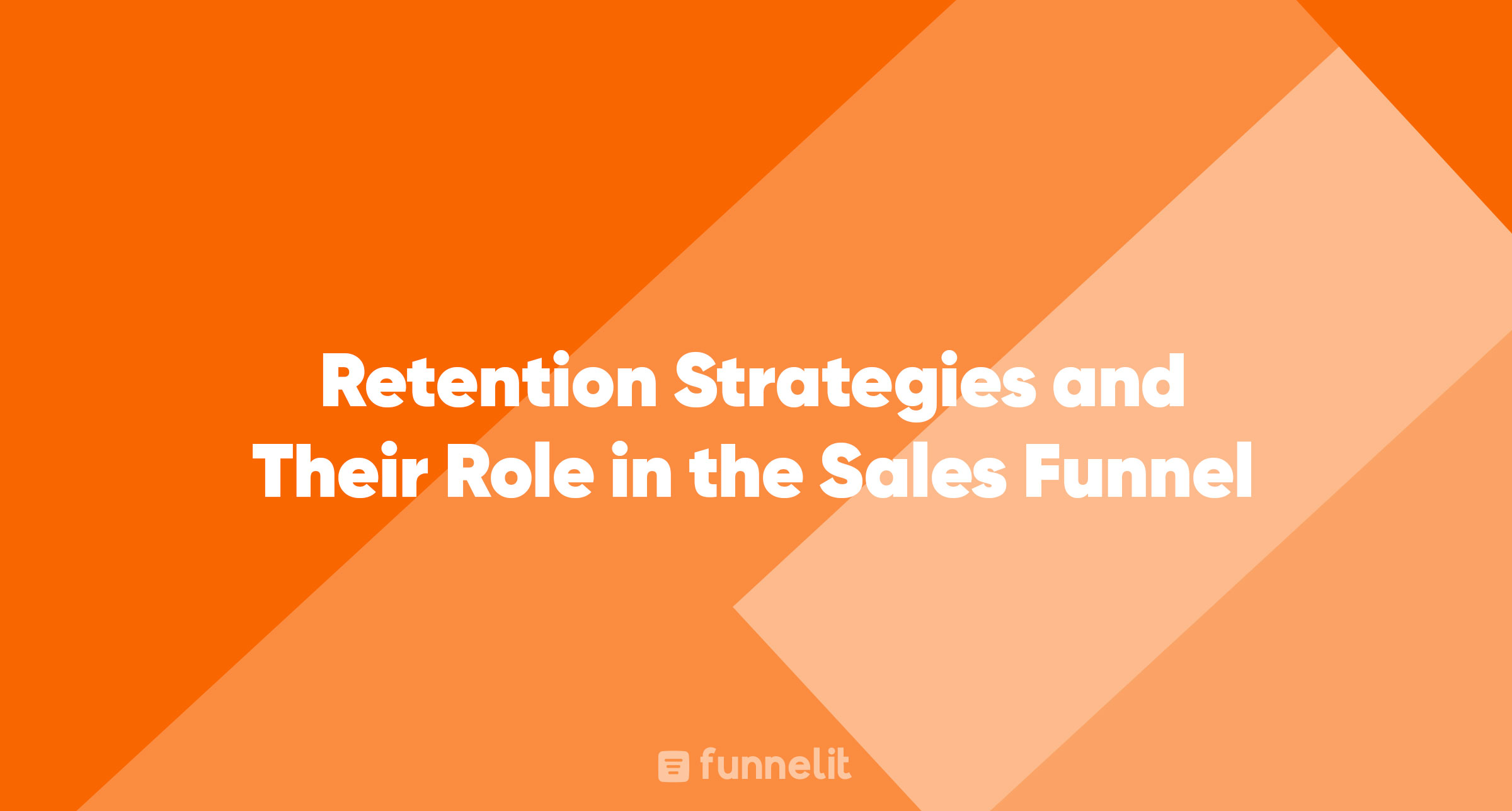Have you ever wondered why some businesses seem to thrive with a loyal customer base, while others constantly scramble to attract new clientele? The secret often lies in their retention strategies and understanding where these fit into the sales funnel.
1. Introduction to Retention Strategies
Retention strategies refer to the methods and tactics businesses employ to keep their existing customers engaged and loyal to their brand. These strategies are crucial because retaining a customer is often more cost-effective than acquiring a new one. In the context of the sales funnel, which typically consists of stages like awareness, interest, decision, and action, retention plays a pivotal role after the initial sale. It ensures that customers don't just make a one-time purchase but continue to engage with the brand, leading to repeat purchases and referrals.
2. The Cost of Customer Acquisition vs. Retention
Acquiring a new customer can be an expensive endeavor. From marketing campaigns to promotional offers, the costs can quickly add up. Studies have shown that acquiring a new customer can cost five times more than retaining an existing one. This disparity in cost highlights the importance of focusing on retention. When businesses prioritize retention, they can allocate resources more efficiently, leading to a healthier bottom line. Moreover, a retained customer is more likely to make repeat purchases, increasing their lifetime value to the company. This makes retention a more cost-effective strategy in the long run, providing both immediate and long-term financial benefits.
3. The Role of Customer Loyalty in the Sales Funnel
Customer loyalty is the bedrock of sustained business success. Loyal customers not only make repeat purchases but also become brand ambassadors, recommending products or services to their peers. Within the sales funnel, these loyal customers play a dual role. First, they solidify the bottom of the funnel, ensuring consistent revenue. Second, they can reintroduce new potential customers at the top of the funnel through referrals. This cyclical nature amplifies the sales funnel's effectiveness, making it more robust and less reliant solely on new customer acquisition.
4. Personalization as a Retention Tool
In today's digital age, customers expect more than just generic interactions. They seek personalized experiences tailored to their preferences and needs. By leveraging data analytics and customer insights, businesses can create bespoke experiences for their clientele. This personal touch can range from product recommendations based on past purchases to personalized email campaigns. Such strategies make customers feel valued and understood, leading to increased satisfaction. When customers feel that a brand truly "gets" them, they are more likely to remain loyal, making personalization a powerful tool in the retention arsenal.
5. Engagement and Communication Strategies
Engaging with customers is not a one-time event but a continuous process. Effective engagement requires consistent and meaningful communication. This can be achieved through various channels, such as newsletters, social media interactions, webinars, or even personalized follow-up emails. The goal is to keep the brand at the top of the customer's mind and provide them with value even after the initial sale. For instance, sharing useful content related to a product they purchased or informing them about upcoming promotions can keep the relationship fresh and dynamic. By maintaining open lines of communication, businesses can address any concerns promptly, further solidifying the trust between the brand and the customer.
6. Feedback and Continuous Improvement
One of the most potent tools for retention is feedback. By actively seeking and valuing customer feedback, businesses can gain insights into what's working and where improvements are needed. This feedback loop can be established through surveys, reviews, or direct interactions. Once feedback is gathered, it's crucial to act on it. Whether it's enhancing a product based on user suggestions or rectifying a service flaw, continuous improvement demonstrates a brand's commitment to its customers. This proactive approach not only helps in retaining existing customers but also in refining the overall customer experience, making it more appealing to potential new customers.
7. Conclusion: The Long-Term Benefits of Retention Strategies
As we've journeyed through the intricacies of retention strategies and their role in the sales funnel, a few key themes emerge. Firstly, retention is not just a cost-saving measure but a growth strategy. By focusing on keeping existing customers engaged and satisfied, businesses can tap into a consistent revenue stream and benefit from the advocacy of loyal customers.
Secondly, the modern customer seeks more than just a transactional relationship. They crave personalized experiences, open communication, and the feeling of being valued. Businesses that recognize and cater to these desires are more likely to foster long-lasting relationships.
Lastly, the feedback loop is invaluable. In a world where products and services are constantly evolving, staying attuned to customer needs and preferences is paramount. By actively seeking feedback and making continuous improvements, businesses can stay ahead of the curve and ensure they remain relevant in their customers' eyes.
Conclusion
In the ever-evolving world of sales and marketing, it's easy to get caught up in the chase for new customers. However, as we've explored, the true key to sustainable growth often lies in nurturing and retaining the customers you already have. By integrating effective retention strategies into your sales funnel, you not only ensure a steady stream of revenue but also build a foundation of loyal customers who can become your brand's biggest advocates.
